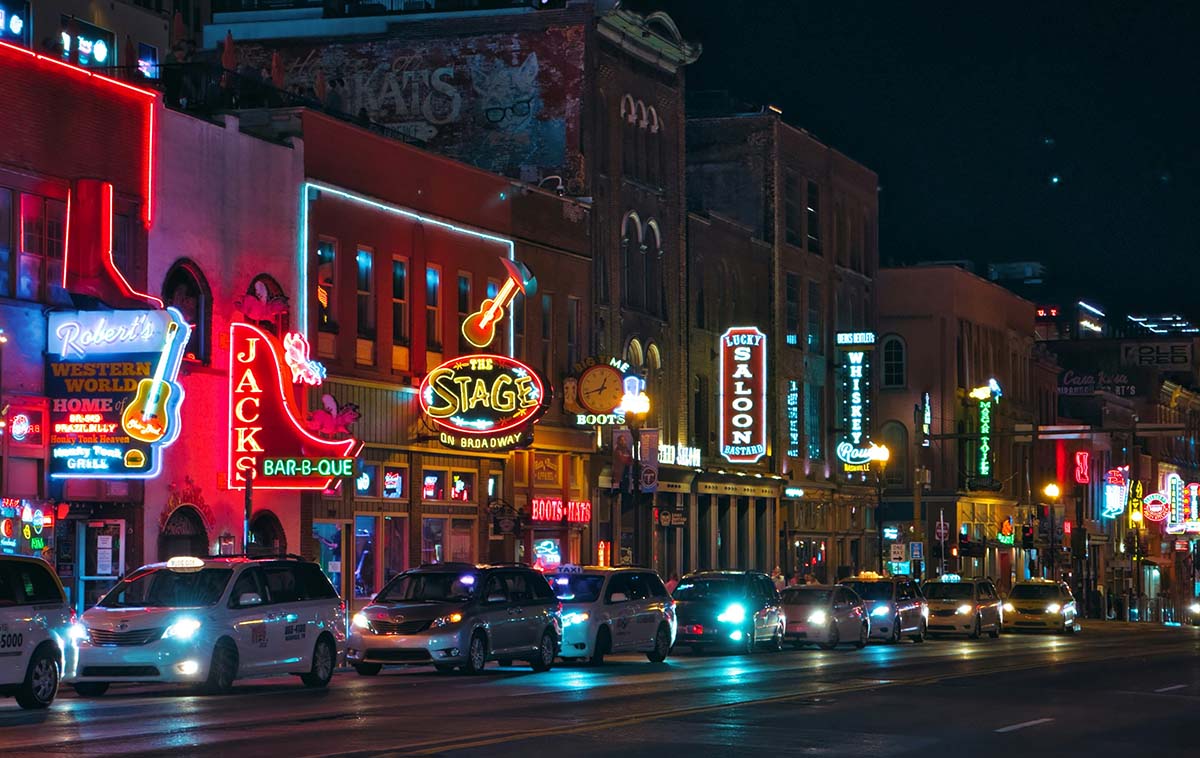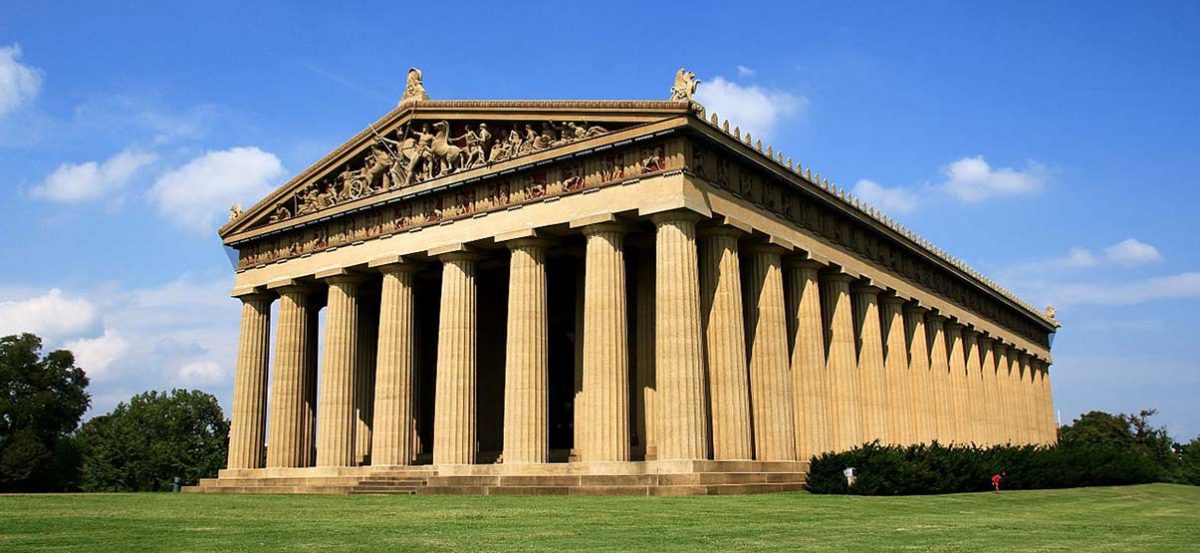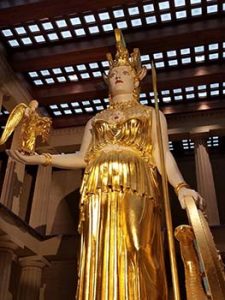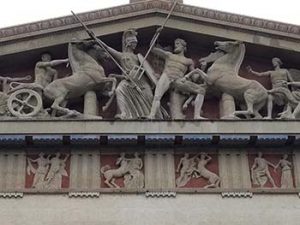When most people think of Nashville, they picture neon lights on Broadway, guitar riffs spilling out of every honky tonk, and a place where country music is stitched into the very sidewalks. But before Nashville was “Music City,” it was something else entirely. It was a rough-around-the-edges frontier town, a river hub where fortunes were gambled, and later, one of the youngest state capitals in America. The truth is, Nashville’s story is much older—and a little grittier—than the banjo strums most folks expect.
The Cumberland Frontier
In 1779, when James Robertson and John Donelson led settlers into what would become Nashville, it wasn’t exactly a warm welcome. The Cumberland River cut through a wilderness that was beautiful but harsh, and life here was a gamble with the odds stacked against you. Families huddled together inside Fort Nashborough (a replica still stands downtown), surviving on grit, determination, and more than a little luck.
This wasn’t a polished city with grand buildings—it was cabins, mud, and hard work. Settlers contended with long winters, Native resistance to encroachment, and the reality that every meal had to be hunted, trapped, or coaxed from the rocky soil. But it was here, on the river’s edge, that Nashville’s identity as a place of persistence began.
River Trade and Risk
By the early 1800s, Nashville started to grow beyond its palisade walls. And like so many cities in America, its lifeline was water. The Cumberland River wasn’t just a scenic backdrop; it was Nashville’s highway. Flatboats loaded with goods pushed downstream, sometimes all the way to New Orleans. Farmers shipped tobacco, corn, pork, and whiskey—anything that could fetch a price in a wider market.
The trip was profitable, but there was a catch: you couldn’t exactly row those flatboats back upstream. That meant crews had to walk the entire way home, a trek of hundreds of miles through often-hostile terrain. Imagine making money on a sale in New Orleans and then hiking through the wilderness just to get back to Nashville. That’s the kind of risk frontier Nashvillians lived with every day.
The river trade also brought characters of every stripe: gamblers, adventurers, and those looking to make a fortune fast. Nashville earned a reputation as a place where opportunity and danger flowed side by side. That edge hasn’t completely disappeared—you can still feel it when you walk Second Avenue or stroll past the riverfront.
A Young State, a Growing City
When Tennessee became a state in 1796, Nashville was on the fast track to becoming more than a frontier outpost. The city’s central location, river access, and energetic population made it a natural hub. By 1843, it was designated the state capital, complete with a grand new capitol building perched on a hill, overlooking the town below.
That building—still standing today—was more than limestone and columns. It was a symbol of how far Nashville had come in just a few generations. From cabins on a muddy riverbank to halls of government, Nashville’s story mirrored that of America itself: rapid change, ambition, and a fair share of contradictions.
Before the First Song
Here’s the part that often surprises people: Nashville’s identity as “Music City” wouldn’t really take shape until the late 19th and early 20th centuries. Long before the Grand Ole Opry, there were court cases, political battles, and merchants trying to keep the lights on. The stories weren’t sung yet—they were lived.
That’s why walking through downtown today can feel like stepping into layers of history. Beneath the glow of honky tonk signs are streets that once echoed with wagon wheels, shouts from the riverfront market, and debates about what kind of city Nashville wanted to be. The music is just the most recent chapter in a book that’s been writing itself for nearly 250 years.
Walking Through the Past
The best way to really get this sense of Nashville’s “before the music” story isn’t from behind glass in a museum—it’s on the streets themselves. When you take a Nashville Walking Tour, you’re retracing the steps of those first settlers at Fort Nashborough, seeing the riverfront where trade defined fortunes, and standing on the same ground where Tennessee declared itself part of a young nation.
That’s what makes Nashville History Tours different. They aren’t just dates and names—they’re about showing how a scrappy frontier settlement turned into a capital city and eventually into the Music City we know today. It’s a reminder that history is alive, and in Nashville, it’s right under your feet.
Nashville Before the Neon
So the next time someone tells you Nashville is all about music, you’ll know better. The guitars, fiddles, and neon signs are just the surface. The real story starts with cabins on a bluff, with flatboats pushing south, and with citizens carving out a city in the wilderness. Before the songs, before the spotlights, before the stage—there was Nashville. And that story is worth walking through.
Author Bio
This article was contributed by Paul Whitten, U.S. Army veteran, historian, and founder of Nashville Adventures — an award-winning tour company that brings Nashville’s past to life through Nashville History Tours and Nashville Walking Tours. From ghost stories to Civil War battlefields, Paul and his team share the city’s grit, resilience, and character in a way you won’t find in museums.












